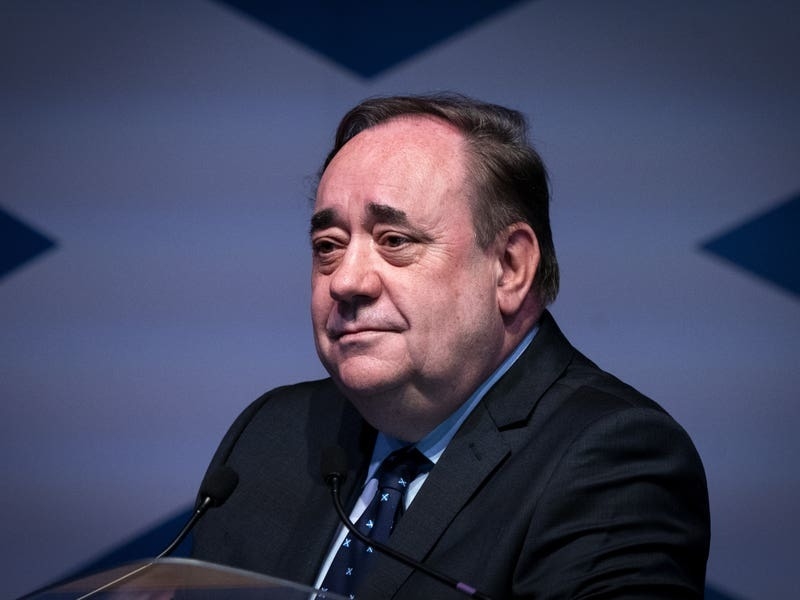Sponsored Content
Phil Bain, deputy managing director of Rathbones Investment Management International, looks at how victory for Donald Trump could affect some of the main policy areas
ELECTIONS have a unique ability to challenge investors’ capacity to maintain a calm, dispassionate view.
Nowhere is this more evident than in the US as it prepares to choose its next president. It is crucial to cut through the noise of partisan debates and focus on what really matters for markets and investors.
Since Donald Trump’s 2016 election, followed by the pandemic and the war in Ukraine, both Republicans and Democrats have embraced more protectionist positions, especially towards China. They have become more tolerant of the government spending much more than it receives in taxes and more open to the state playing an active role in directing investment. These broad trends are likely to persist, regardless of the election outcome. But beyond these commonalities, the parties agree on very little.
Republican Trump’s proposals, discussed in detail below, seem more inflationary than those of his rival, Democrat Kamala Harris.
Under Trump, the budget deficit would probably grow, given his tax plans, and labour supply could shrink owing to his “America First” agenda, which restricts immigration. However, Trump’s platform includes a significant positive offset for the US stock market in the form of corporate tax cuts, while the impact on equities outside the US might be less favourable, especially given Trump’s proposed trade changes.
On the other hand, Harris would largely maintain the status quo: she has shown little interest in addressing very high government spending or deviating from President Joe Biden’s economic policies. Because of this, we mostly address the effects of Trump’s policies, as he represents change and it is change that moves markets.
The race is tight, and the contest for control of Congress is equally close. These congressional results will have a huge impact on what the next president can implement, leaving many questions about how campaign rhetoric will translate into actual policy. With that caveat in mind, here is a whistle-stop tour of the main policy areas.

Corporate tax plans
The Republican tax plan is likely to be well received by the stock market, given its potential direct impact on post-tax corporate earnings.
Trump aims to reduce corporate tax from 21% to 15%, while Harris proposes raising it to 28%. Our estimates suggest that the Republican proposal could increase annual post-tax earnings by 8%, while the Democratic plan could reduce them by about 9%.
Geopolitics
Trump has implied support for a ceasefire in Ukraine, which could involve ceding territory to Russia – an idea that is a non-starter for the Democrats. He has also criticised the level of US support for Ukraine and Nato. Meanwhile, Trump has taken a much more confrontational stance in the Middle East, expressing full support for Israel, whereas Harris has called more strongly than Biden for a ceasefire in Gaza. Defence spending would probably rise under a Trump presidency.
Trade policy and China
Trump has proposed a universal 10% tariff on all imports and a 60% tariff on Chinese goods. While this may not be fully implemented, the threat of higher tariffs adds to inflation risks. A sharp rise in tariff rates could cause a significant one-off inflationary spike and hurt economic growth, with independent estimates ranging from a 0.5% drag on GDP to a hit of more than 2% in a full-blown global trade war. However, there is uncertainty about whether Trump would follow through with this plan. It may serve as a bargaining tool for extracting concessions from China or compelling NATO allies to increase defence spending. Opposition in Congress and corporate lobbying could also dilute these proposals.
Debt and deficits
The risks to US government finances, and therefore US bonds, are probably highest if Trump wins the election. Under Trump, the debt levels could rise faster because of his fiscal policies.
Industrial and energy policy
Both parties support a more activist role for the state in US industrial policy. Major legislation such as the 2021 Infrastructure Investment and Jobs Act, the 2022 Inflation Reduction Act and the CHIPS and Science Act represent over $2 trillion in spending over the next decade. While the Inflation Reduction Act is a landmark climate law, Trump has been critical and aims to repeal it. However, repealing the act may prove difficult, as many states benefiting from it are Republican heartlands. Trump’s policies could put downward pressure on global oil prices by expanding US production, but this should not be overstated given OPEC’s larger influence over the global oil market.
Immigration
Net immigration and the ability for migrants to work in the US are likely to decline significantly under Trump’s proposals. This would slow growth in the labour force, which has been a key driver of America’s fast post-pandemic recovery. Foreign-born people account for more than half of the nine million new workers added since Covid-19. Reducing immigration could push wages and inflation higher, particularly in sectors like agriculture, construction, transport and healthcare, where foreign-born workers are prevalent.
The dollar and the Fed
Trump has criticised the strength of the dollar, but influencing currency markets isn’t easy. A more powerful option would be pressuring the Federal Reserve to keep interest rates lower than they ought to be. Trump has been more willing than other recent presidents to interfere with the Fed’s independence, though any such attempt is unlikely to succeed.
In summary
Elections rarely change the broader direction of markets, but a Trump victory would probably lead to higher inflation, driven in part by tax cuts and spikier global trade relations.
We think the risks under Trump appear greater for markets outside the US owing to those “America First” trade policies and fiscal approach.
-
See next week’s JEP Business for US election insights from Lord Kim Darroch, who was the guest speaker at Rathbones’ US Election Speaker Breakfast this month.






